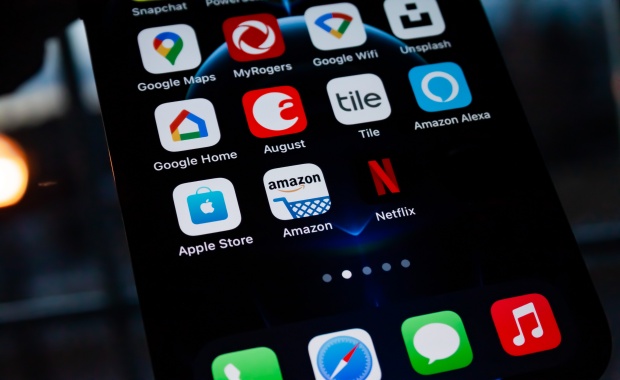Success Advice
10 Things Every Smartphone App Needs To Be A Top-Seller

 The world of iPhone, Android and iPad apps today is an extremely competitive one. With 1000’s of applications available, how do you set your app apart from the rest?
The world of iPhone, Android and iPad apps today is an extremely competitive one. With 1000’s of applications available, how do you set your app apart from the rest?
The following is a summary of the 10 things every top-selling iPhone, Android & iPad app needs to be successful.
10 Features Of A Top Selling Smart Phone App
It Needs Superior Performance
Probably the most important factor in having a top-selling app is the performance. Developers must take ample time testing and retesting the app for problems that arise before putting it out on the market. Under no circumstances should an app be put out on the market with performance problems. An app that works great and uses very little battery and cpu power is sure to shine.
Checkout uTest.com for a community of experts who can test your app and send improvement ideas your way.
You Need A Creative Marketing Plan
Once your well-tested app is developed, you must create a unique yet effective marketing plan. Become well versed on what your top competitors have in common and use this to your advantage to create a plan that separates you from the rest. The use of advertising and technology can work hand in hand to create the proper amount of buzz.
Don’t forget about tried and true measures such as press releases. You may also want to fire up a Twitter, Facebook & LinkedIn Account and start following people in your targeted audience.
Your App Must Be Compatible
In order to have a top-selling app you must create an application that is completely compatible with the platform that it is developed for. Being sure to tailor the features and characteristics for each specific platform will help make users comfortable in using your app, thus increasing your popularity and sales.
You Must Have SEO and ASO Optimization
You cannot underestimate the importance of SEO and ASO optimization. Over half of downloads for apps come from individuals performing a keyword search. Be thoughtful in your app store description and use quality images in order to achieve top store rankings. Don’t forget to optimize your keywords for use on search engines like Google, Yahoo and Bing.
Your App Must Have A Fast Loading Time
In a society of fast is better, app users do not want to wait for an application to load. When developing your app, aim for under 5 seconds of loading time. This will keep users engaged and avoid complaints of long wait times.
You Must Integrate Social Media
There are millions of social media users at any given time. This gives you direct access to these individuals that can help get the word out about your app, but make sure and have a strategy in place. Be sure to utilize the four main social media giants and network with review sites that can provide critical advice on what works and what doesn’t. In addition, blogs can be the catalysis to get the word out about your app.
No Freezing or Crashing Of Your App
It is very important that when developing a top-selling app that all of the kinks are worked out. An app that freezes or crashes is sure to be on the bottom of the list for buyers.
If your application is complicated, creating a second thread for your app to run on may be a solution. In addition, making sure the platform is compatible will help to alleviate problems such as freezing.
Release A Free Trial Version To Begin With
When searching for apps to download, most people gravitate towards the free versions. Having a free trial version of your app can drive users to buy the full version with in app purchasing. It is also important to set a competitive price for your app once users are ready to buy.
Keep Your App ‘Ad Free’
This may be controversial because ads do have their place and they allow developers to make extra money. However, an app that is constantly interrupted with ads and banners is not going to rank high on the list for users.
It is best to create a quality paid app that has very little interrupting ads.
Your App Needs A Usability Factor
Top selling apps should add some sort of value to the user. Creating a unique and usable app helps to set you apart from the thousands of other apps.
Designing an app that helps with a task or provides guidance for something sells well and requires repeated usage.
Having a top-selling Iphone or Ipad app is not easy. It is possible however with the right steps taken and the right amount of planning to attain a top-selling app. Be diligent, be creative and develop a quality app that users will need and want.
Did You Know
How Skilled Migrants Are Building Successful Careers After Moving Countries
Behind every successful skilled migrant career is a mix of resilience, strategy, and navigating systems built for locals.

Moving to a new country for work is exciting, but it can also be unnerving. Skilled migrants leave behind familiar systems, networks, and support to pursue better job opportunities and a better future for their families. (more…)
Life
10 Research-Backed Steps to Create Real Change This New Year
This New Year could finally be the one where you break old patterns and create real, lasting change.

Every New Year, we make plans and set goals, but often repeat old patterns. (more…)
Change Your Mindset
The Silent Skill That Makes People Respect You Instantly
What truly earns respect and why most people go about it the wrong way

Everybody craves respect but not everyone earns it. Some people believe that a title, years of experience, or a position of authority automatically entitles them to respect. (more…)
Entrepreneurs
The Essential Skills Every Entrepreneur Needs In 2026
Success in the digital age isn’t about luck. It’s about mastering the skills that separate dreamers from doers.

When I was 22 years old, I started my first side hustle as a ghostwriter. (more…)
-

 Shift Your Mindset4 weeks ago
Shift Your Mindset4 weeks ago11 E’s That Define Every Great Leader And Why Most People Miss Them
-

 Did You Know3 weeks ago
Did You Know3 weeks agoThe Success Patterns You Inherited (And Didn’t Notice)
-

 Entrepreneurs3 weeks ago
Entrepreneurs3 weeks agoThe Essential Skills Every Entrepreneur Needs In 2026
-

 Business4 weeks ago
Business4 weeks agoThe Hidden Money Pit in Your Operations (and How to Use It)
-

 Change Your Mindset2 weeks ago
Change Your Mindset2 weeks agoHow to Turn Your Mind Into Your Greatest Asset (Instead of Your Enemy)
-

 Change Your Mindset2 weeks ago
Change Your Mindset2 weeks agoThe Silent Skill That Makes People Respect You Instantly
-

 Life1 week ago
Life1 week ago10 Research-Backed Steps to Create Real Change This New Year
-

 Tech1 week ago
Tech1 week agoWhat’s in a Name? How to Get Your Domain Right


























2 Comments